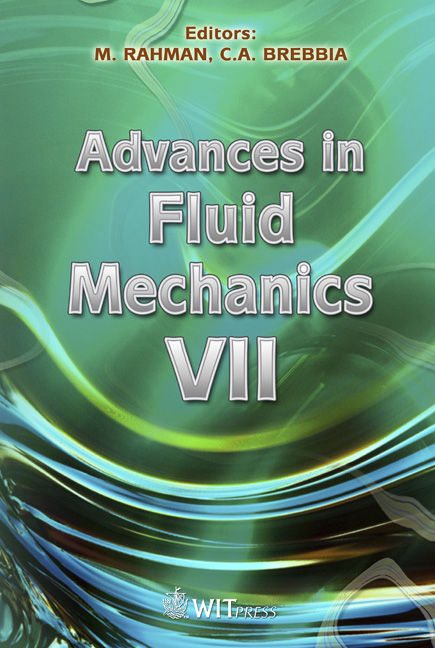Influence Of Linear And Non-linear Constitutive Models On Thermoacoustic Waves In An Enclosure
Price
Free (open access)
Transaction
Volume
59
Pages
10
Page Range
13 - 22
Published
2008
Size
389 kb
Paper DOI
10.2495/AFM080021
Copyright
WIT Press
Author(s)
L. Skerget & J. Ravnik
Abstract
The problem of unsteady compressible fluid flow in an enclosure induced by thermoacoustic waves is studied numerically. Full compressible set of Navier-Stokes equations are considered and numerically solved by boundary-domain integral equations approach, coupled with wavelet compression and domain decomposition to achieve numerical efficiency. The thermal energy equation is written in its most general form including the Rayleigh and reversible expansion rate terms. Both the classical Fourier heat flux model and wave heat conduction model are investigated. The momentum flux is modelled using standard Newtonian viscous model and linear viscoelastic Maxwell model. The velocity-vorticity formulation of the governing Navier-Stokes equations is employed, while the pressure field is evaluated from the corresponding pressure Poisson equation. Material properties are taken to be for the perfect gas and assumed to be pressure and temperature dependent. Keywords: compressible fluid flow, velocity-vorticity formulation, Navier-Stokes equations, thermoacoustic waves. 1 Introduction In the paper the generation and transmission of thermoacoustic waves in an perfect gas filled closed cavity is studied numerically. When a compressible fluid is subjected to a rapid increase in temperature at a solid wall, a sudden expansion of the adjacent gas occurs. This phenomenon generates a fast increase in the local pressure and leads to the production of pressure waves. These thermally generated waves are referred to as thermoacoustic waves. Thermoacoustic transport phenomena may be very interesting, when the fluid is close to thermodynamic critical point or when othermodes of transportmechanism
Keywords
compressible fluid flow, velocity-vorticity formulation, Navier-Stokes equations, thermoacoustic waves.





